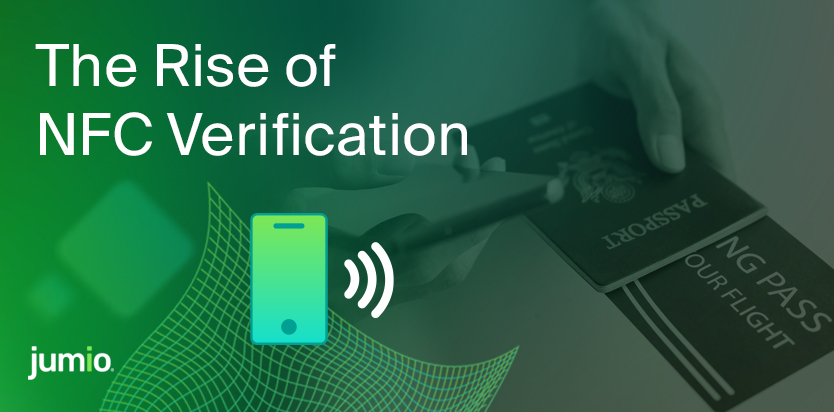
“First impressions last” may be an old phrase, but in an era where customers are quick to flame brands on social media and leave a lasting online legacy for their poor experiences, it’s never been more relevant than today.
As our lives continue to move online, digital onboarding has become the first impression many customers have with a brand. It has to strike a delicate balance, as users expect a fast, frictionless process, but organizations must be certain the person on the other end of the screen is who they claim to be. Optical character recognition (OCR) has long been the backbone of document checks, but it’s not foolproof. It’s prone to misreads, which increases the need for manual document reviews – slowing down the process and potentially creating a poor first impression. An even greater concern for organizations is that it’s become increasingly vulnerable to fraudsters who can easily manipulate printed text or images.
Near Field Communication (NFC) chip-based verification has long been the promised alternative, and many of us have already adopted the technology in our lives through tap to pay with our cards, phones, and even smartwatches. Its use for ID verification follows the same process, and is just as straightforward – tap to verify. By reading the cryptographically signed chip embedded in e-passports and government IDs, smartphones’ NFC capabilities can eliminate OCR errors and raise the bar on security.
The Case for NFC-Based Verification
The advantages of NFC verification are clear for both organizations and the customers they serve:
- It’s highly efficient, offering a fully automated process, delivering verification in seconds without human review.
- It’s very secure, as government-certified ID data, when transmitted in encrypted form, can’t be duplicated or spoofed.
- It’s completely accurate, as 100% chip-based data capture eliminates errors seen with OCR and manual entry.
- It’s high quality, with high-resolution chip images leading to strong data integrity.
- It’s deeply trusted, and recognized by regulators worldwide as equivalent to in-person verification.
In short, NFC verification is quick and intuitive for end-users, and it’s low-friction, secure, and compliant for organizations.
What’s New: Jumio’s Latest NFC Enhancements
Jumio was an early innovator in NFC verification and has been supporting the capability for nearly a decade. While adoption is still relatively low, many national ID cards around the world contain NFC chips, as do most passports, and uptake of eID-compliant state driver’s licenses in the U.S. is increasing (albeit slowly).
Our October enhancements take the experience further, addressing customer needs for increased coverage, greater transparency, and an even smoother user journey. With this new release, we’ve made NFC more accessible, more secure, and more aligned with real-world digital onboarding needs:
- Broader coverage: Now includes read-only support for IDs that lack certificates, expanding the range of supported documents.
- Greater flexibility and security: Organizations can now make NFC mandatory, closing gaps that fraudsters exploit when NFC is optional.
- More transparency: Detailed NFC results (READ_VALIDATED, READ_ONLY, SKIPPED) are now available through the Retrieval API, with portal support coming soon.
- Improved user experience: New country-specific instructions, adaptive animations (e.g., showing Android chip locations), and a simplified progress flow help users complete the scan seamlessly.
Why Now: The Real-World Benefits of NFC Verification
Moving to NFC verification doesn’t just offer incremental improvements over more traditional verification methods – it can have a transformative impact on how a customer onboards and interacts with any organization where KYC, AML, compliance or fraud prevention are essential. Here are just three examples:
- Passenger verification for booking travel: A passenger booking an international flight can complete verification by scanning their e-passport chip in seconds. Airlines benefit from faster, more accurate KYC checks and passengers avoid long delays.
- Onboarding in iGaming: Operators facing strict anti-fraud and AML rules can now rely on NFC to prevent fake accounts. A chip-signed ID is virtually impossible to forge, helping to keep platforms compliant and users safe – all while providing seamless, rapid verification.
- New account set-up for financial services: Banks and fintechs can reduce onboarding friction while satisfying regulators who increasingly recognize NFC verification as equivalent to in-branch identity proofing.
In each case, the result is the same: smoother onboarding, fewer false positives, and stronger defenses against fraud.
Looking Ahead – The Future of NFC in Digital Identity
NFC is no longer a niche feature or a nice-to-have offering. It’s rapidly becoming a regulatory expectation, as well as a customer preference. We’ve been innovating in NFC verification for almost a decade, and we’re continuing to invest in expanding coverage and integrating chip data into dashboards and reporting. All of these moves will help to improve adoption at scale, so that organizations can future-proof their digital identity verification strategies.
The lesson is clear: just as the selfie redefined biometrics, NFC chip reading is redefining ID verification. Organizations that embrace it now will:
- Reduce fraud
- Build customer trust
- Deliver a seamless onboarding experience for their customers
Now is the time to rethink onboarding, and how to leave a lasting good impression. Contact us to learn more about how Jumio’s NFC chip-based ID verification enhancements can strengthen your trust strategy.